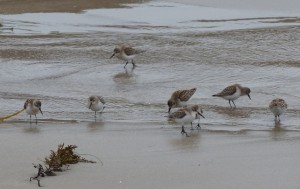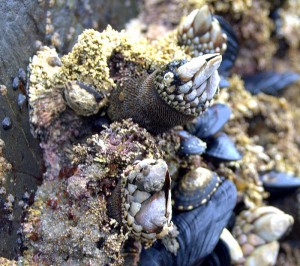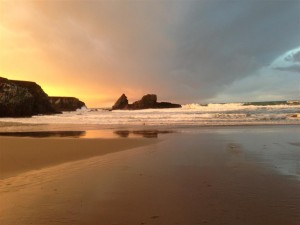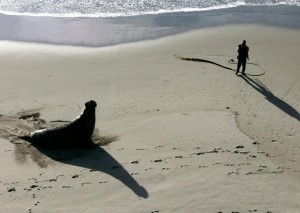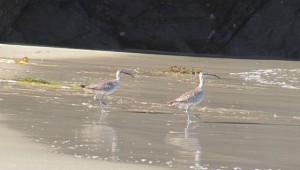A small flock of Western Sandpipers was seen at Cook's Beach recently, running along the surf line. Tom Eckles photographed the scene, which shows kelp on the beach.
There's something quite endearing about these birds - they make me smile when I see them. If you'd like to listen to their calls, here's the link to the Cornell Lab of Ornithology: http://www.allaboutbirds.org/guide/western_sandpiper/sounds
Thanks to Tom for allowing me to share his photos with you here. To see much more of Tom's photography, here is his website: www.tomeckles.com


